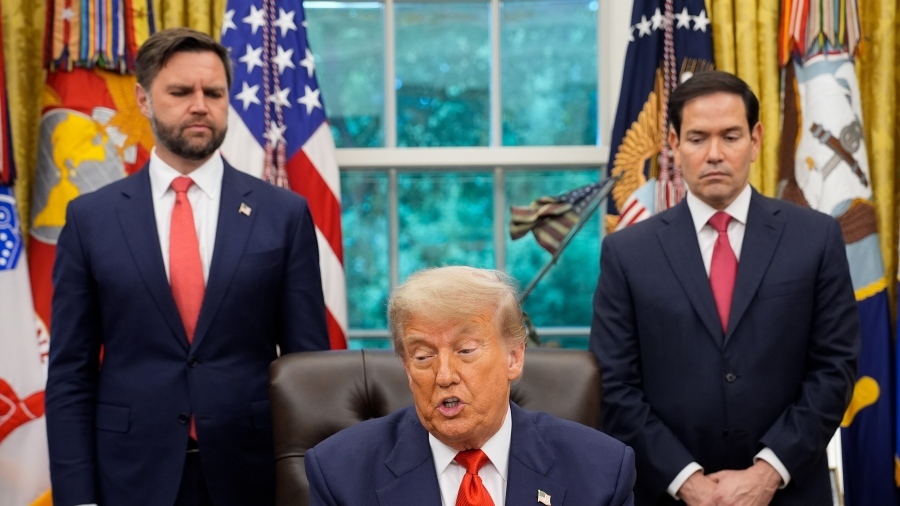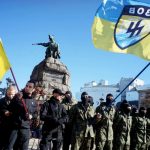Shock revelation – The hidden rift in the Trump team, Ukraine ignited civil war between Vance and Rubio

Developments in Ukraine reveal a fierce, underground conflict within the Trump administration itself, starring Vice President JD Vance and Secretary of State Marco Rubio.
The world may be watching the central “drama” of a peace in Ukraine that will not come unless Russia’s demands are met, but NBC is coming forward with new revelations. These revelations bring to light a fierce, underground conflict within the Trump administration itself, starring Vice President JD Vance and Secretary of State Marco Rubio. Behind closed doors, the two men are clashing over the future of Ukraine.
Vance, surrounded by advisors who see Kyiv as an “obstacle to peace,” is pushing for a quick compromise that satisfies almost all Russian demands. In contrast, Rubio is resisting, arguing that any agreement that legitimizes Moscow’s aggression would undermine the security of Europe and America itself. Ukraine is thus caught in the vortex of an American internal power struggle, with two factions shaping two completely different futures for the war and for the US‘s place in the world.
Driscoll’s strict warnings
In a meeting with Ukrainian officials in Kyiv last week, Secretary of the Army Dan Driscoll conveyed a grim assessment of the situation on the battlefield. According to two sources familiar with the matter who spoke to NBC News, Driscoll informed his interlocutors that Ukrainian troops face an extremely difficult situation and are at risk of an immediate defeat by Russian forces.
Driscoll stressed that the Russians are intensifying the pace and scale of their air attacks and have the ability to continue the war indefinitely. The situation for Ukraine will worsen over time, he emphasized, and it is preferable to negotiate a peace agreement now, rather than finding itself in an even weaker position later. The American delegation also conveyed that the American defense industry will not be able to supply Ukraine with weapons and anti-air defenses at the required rate to protect its infrastructure and population, according to the same sources.
Driscoll’s message came after the presentation of a US-backed peace plan that Ukrainian officials viewed as a concession to Moscow. “The message was essentially — you are losing,” said one of the sources, “and you need to accept the deal.”
The Ukrainians’ refusal
The meeting between Driscoll and the Ukrainians is part of efforts by some officials in the Trump administration to pressure Ukraine to accept the new US peace plan without delay, even if it incorporated Russia’s maximum demands and required painful concessions from the Kyiv government, according to several current and former Western officials.
Ukraine politely refused to sign the plan as presented, and the proposal has since undergone significant changes. The meeting constitutes the latest example of a long-running disagreement within the Trump administration over how to resolve the war in Ukraine. The dispute reflects potential political rivalry between two former senators and 2028 contenders: Vice President JD Vance and Secretary of State Marco Rubio.
The two camps
One group, which includes Vance, special envoy Steve Witkoff, and other officials, believes that Ukraine is the main obstacle to peace and advocates for using American influence to force Kyiv into major concessions. The other group, led by Rubio and other officials, views Russia as the culprit for its unprovoked invasion and believes that Moscow will only back down if it pays the cost of its aggression through sanctions and other pressures.
President Donald Trump, with his associates, Republican lawmakers, and European leaders vying for his attention, has shifted between the two approaches to resolving the conflict. “It has been clear for a long time that there was a split, but we had never seen it publicly in this way as in the last few days,” said a former senior US diplomat with experience in Eastern Europe.
The 28-point plan
Diplomacy intensified after the leak of a supposed US 28-point peace plan. The plan emerged from talks in Miami between Russian President Vladimir Putin and his envoy Kirill Dmitriev, and their American counterpart Witkoff, according to two sources.
White House officials stated that it was an American proposal, although the document incorporated Russia’s repeated demands for ceding territories, reducing military capabilities, and abandoning NATO membership. Some elements of the plan contradict previous statements by the Trump administration, including language that implied US forces would not be allowed in Poland.
Rubio initially stated that the plan was drafted by the Russians, but later clarified that the proposal was American with “contributions” from Russians and Ukrainians. In an unusual move, the White House chose Driscoll, rather than a senior diplomat, to brief the Ukrainians on the proposal. Driscoll, an old classmate of Vance at Yale Law School, was already heading to Ukraine for a scheduled visit regarding drone technology.
Ukrainian President Volodymyr Zelenskyy, while expressing serious doubts about the terms of the plan, did not fully reject it, stating that his government was ready for diplomatic discussions. Rubio traveled to Geneva over the weekend, and after talks with Ukrainians and appeals from European diplomats, the most problematic provisions for Ukraine were removed or revised. The plan now showed a dynamic and continuous changes, according to foreign officials.
Driscoll’s actions
The Ukrainians expressed a positive disposition and appeared optimistic about the new 19-point plan under negotiation. Rustem Umerov, secretary of Ukraine’s National Security and Defense Council, reported on social media that a common understanding had been reached on the basic terms of the agreement and left open the possibility of a Zelensky visit to Washington for its ratification.
Driscoll continued his negotiations in Abu Dhabi with Russian officials. Despite the revisions, the plan still resembles previous proposals that Russia had rejected. Russian Foreign Minister Lavrov, who had initially “welcomed” the draft, warned that the Kremlin might reject the new text, citing earlier Trump–Putin talks in Anchorage.
“Certain forces want to jeopardize Donald Trump’s efforts and change the peace plan,” he stated, adding that if the “spirit of Anchorage” is lost, then the story will be completely different. As in previous US efforts, one group in the administration attempted to defend a proposal that favored Russia, while other officials, with the support of European governments and senior Republicans in Congress, resisted.
“If the split continues, it will be very difficult to pursue a coherent policy,” said William Taylor, former ambassador to Ukraine and now a partner at the Atlantic Council.
www.bankingnews.gr
Οι απόψεις που εκφράζονται στα σχόλια των άρθρων δεν απηχούν κατ’ ανάγκη τις απόψεις της ιστοσελίδας μας, το οποίο ως εκ τούτου δεν φέρει καμία ευθύνη. Για τα άρθρα που αναδημοσιεύονται εδώ με πηγή, ουδεμία ευθύνη εκ του νόμου φέρουμε καθώς απηχούν αποκλειστικά τις απόψεις των συντακτών τους και δεν δεσμεύουν καθ’ οιονδήποτε τρόπο την ιστοσελίδα.




